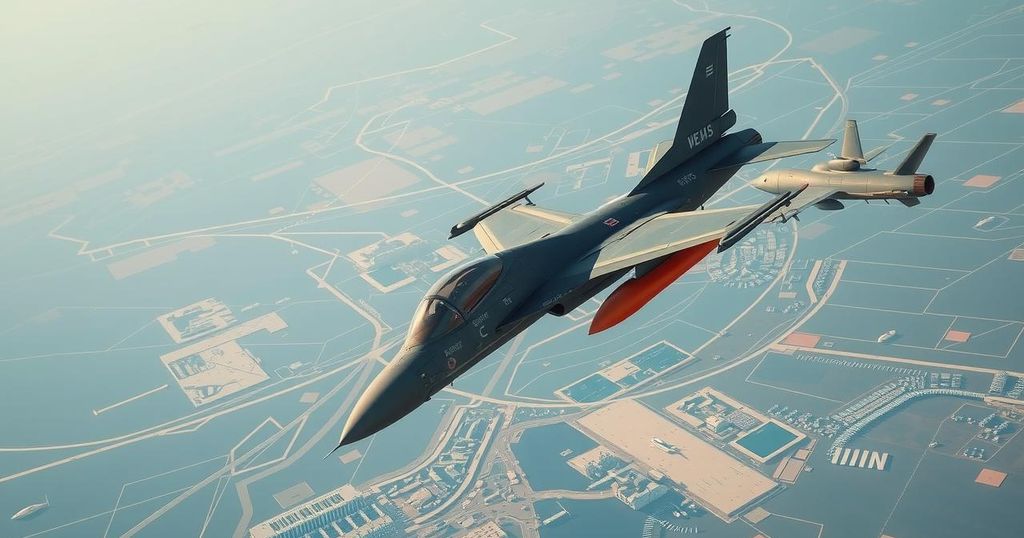Escalating Tensions: Is Syria’s Conflict Evolving into NATO vs. NATO?
The conflict in Syria risks escalating into a NATO vs. NATO clash as tensions rise between the U.S. and Turkey, particularly following the Syrian Democratic Forces’ downing of a Turkish Bayraktar TB2 drone. This incident marks a significant shift in the operational capabilities of regional forces amid ongoing accusations of ceasefire violations. The U.S. military presence in northern Syria is also expanding, reflecting a strategic recalibration in response to the evolving nature of conflict in the area.
The geopolitical landscape in Syria now appears to be evolving into a potential NATO vs. NATO conflict, raising alarms regarding the escalating tensions between the United States and Turkey over territorial control. This conflict is notably highlighted by the recent downing of a Turkish Bayraktar TB2 drone by the U.S.-backed Syrian Democratic Forces (SDF) near the Karakozak Bridge in northern Raqqa. Released footage by the SDF Media Center on January 1, 2025, presented this significant event as they proclaimed their operational success against the drone threat.
The SDF, claiming to have downed the drone at 1:00 PM, has noted that this incident marks the third Turkish drone neutralized by their forces within a single month. The Bayraktar TB2, which boasts advanced capabilities and has been utilized in various military conflicts, underscores the evolving dynamics of air combat in the region. Despite its sophisticated technology, the SDF’s increasing effectiveness at counteracting Turkish drone operations highlights a significant shift in the balance of power on the battlefield.
The heightened frequency of drone engagements, coupled with an earlier event in October 2023 where a U.S. Air Force F-16 downed another Turkish drone, underscores the operational strains between these NATO allies. U.S. officials had stated that the drone’s proximity to American forces necessitated a defensive response. Turkey subsequently denied owning the drone, further complicating the already fragile diplomatic relations and inciting suspicion regarding the operational transparency between the two nations.
Amid these tensions, the SDF has voiced grievances against Turkish incursions, reiterating their assertion that Turkey and its allied forces are violating ceasefire agreements brokered by the United States. Despite the U.S. being positioned as a mediator, the situation remains tense, with both entities trading accusations of escalating aggressive postures. The recent reassurances from the U.S. Department of Defense regarding the continuation of the ceasefire have been met with skepticism by the SDF.
Adding to the complexity is the reported expansion of the U.S. military presence in northern Syria, particularly in Kobani, an area witnessing significant conflict between Kurdish forces and Turkey-backed groups. This strategic realignment by the U.S., aimed at reinforcing force requirements against ISIS while simultaneously supporting Kurdish interests, indicates a shifting paradigm in the region. The presence of around 2,000 U.S. troops reflects a commitment to maintaining stability amidst increasing hostilities.
The conflict in Syria has profoundly altered the regional order, particularly after the rise of various factions vying for control in the aftermath of the Syrian civil war. The Syrian Democratic Forces (SDF), consisting largely of Kurdish groups, have come to dominate northeastern parts of Syria with the support of the United States. In contrast, Turkey’s involvement is largely driven by its desire to combat Kurdish groups it views as terrorist organizations. The presence of advanced drone technology on both sides has led to a series of confrontations that threaten to further destabilize an already volatile region, complicating the relationships between NATO allies and raising questions about future military engagements and collaborations.
In conclusion, the potential for NATO vs. NATO conflict in Syria has grown increasingly evident as hostilities escalate between the U.S. and Turkey. The downing of Turkish drones by the SDF highlights the shifting dynamics of military engagement in the region, revealing deeper geopolitical tensions that could threaten long-standing alliances. As the region’s landscape continues to change, the world’s response to this brewing crisis will likely have significant implications for international security and diplomatic relations within NATO.
Original Source: www.india.com




Post Comment